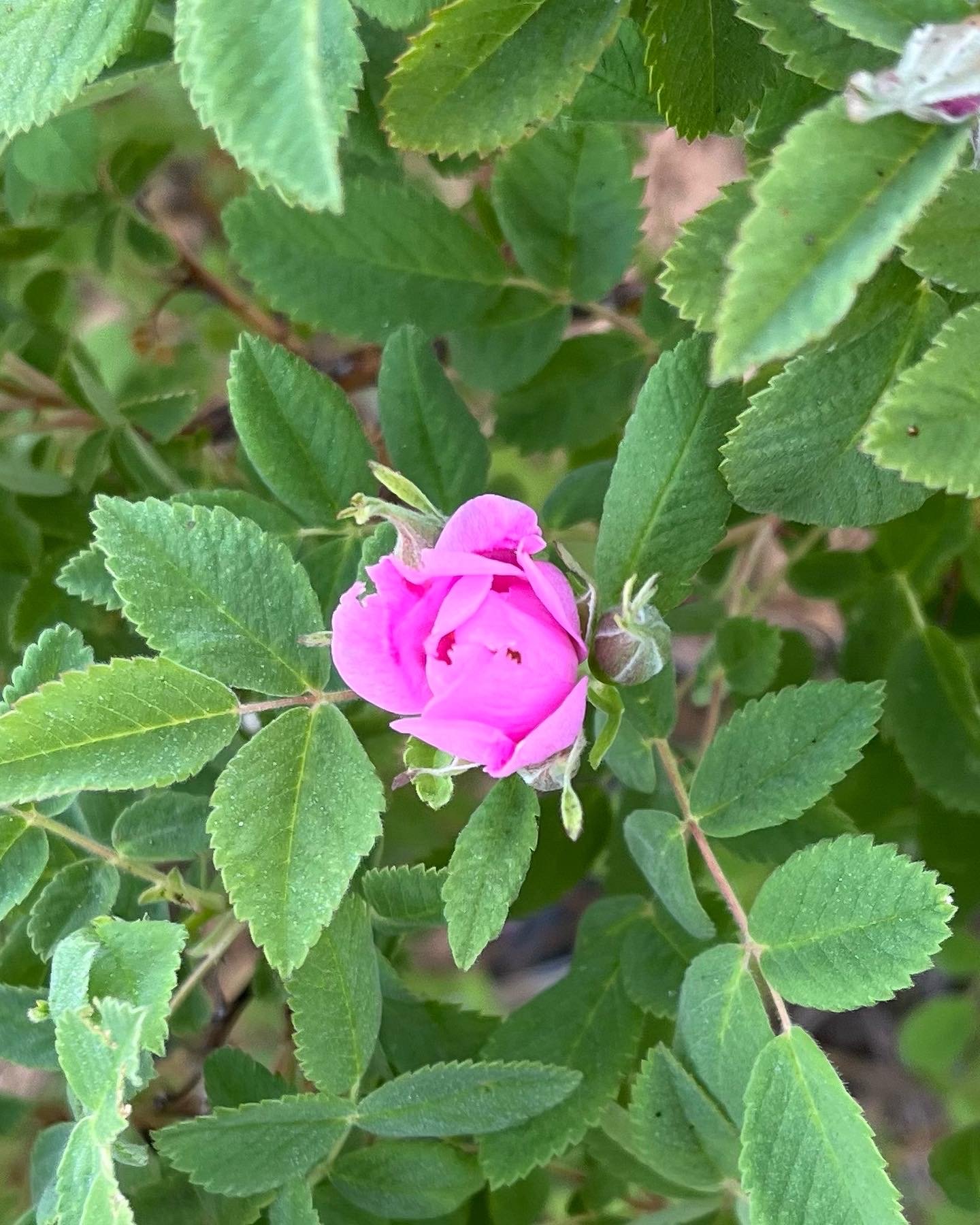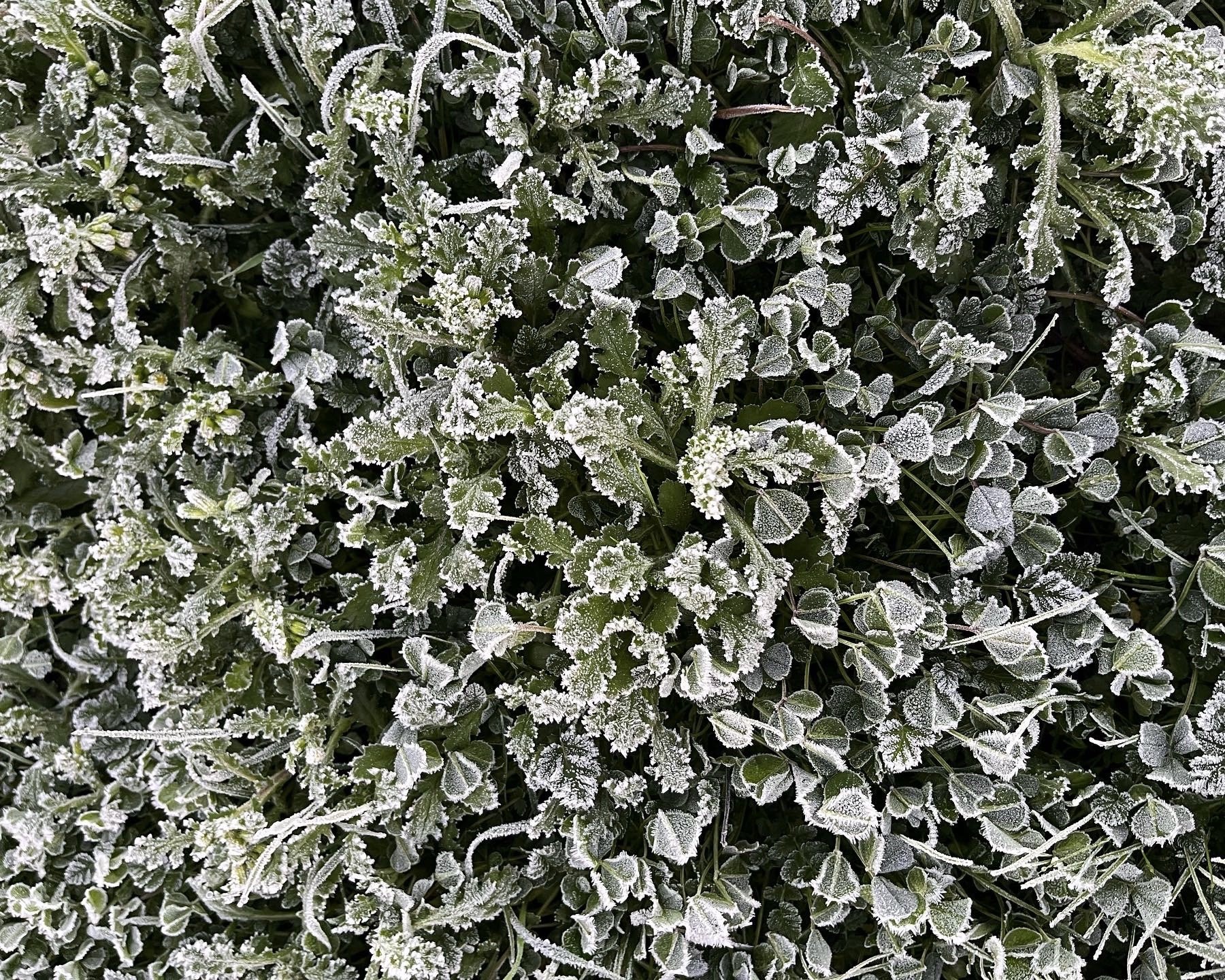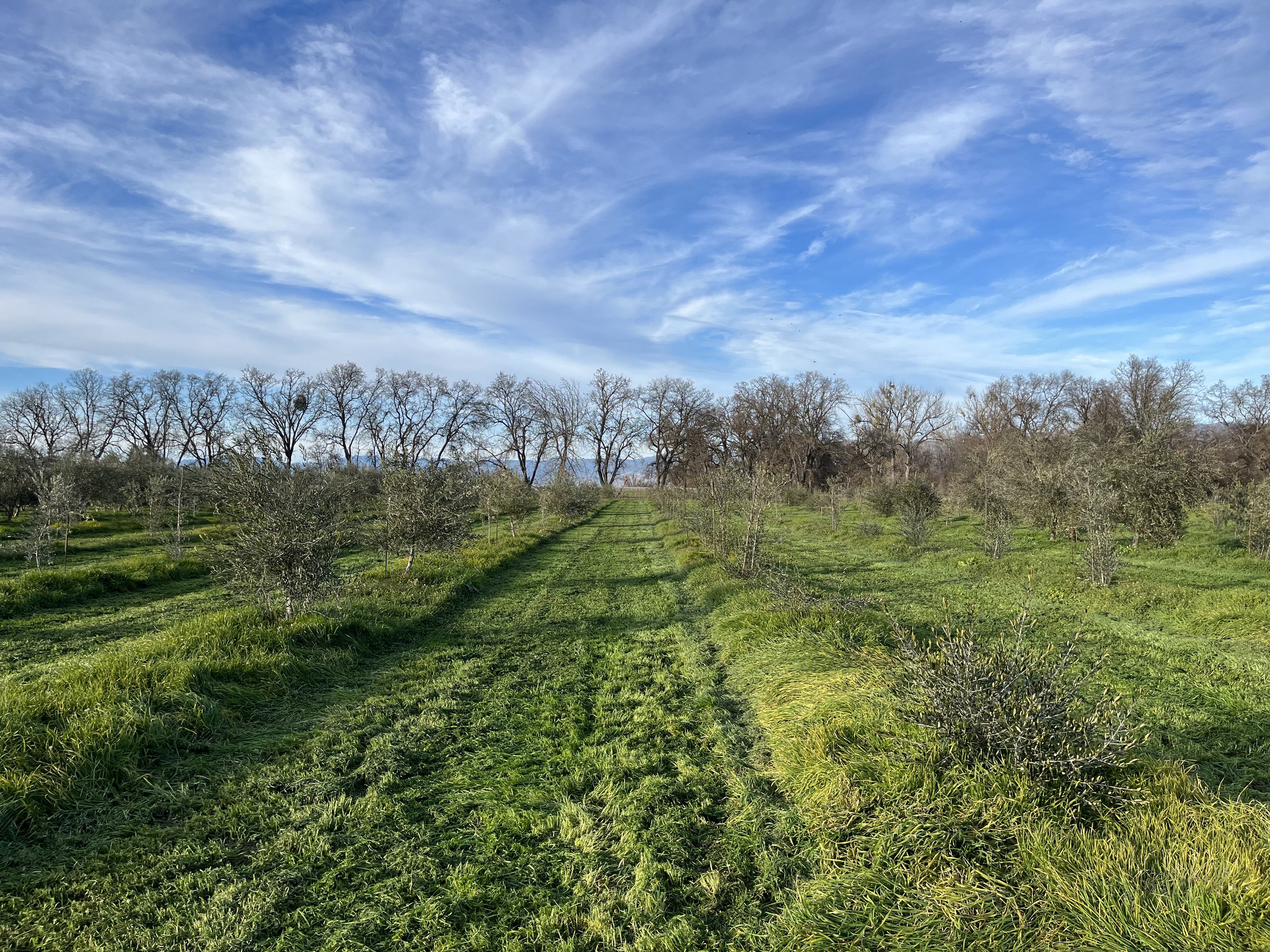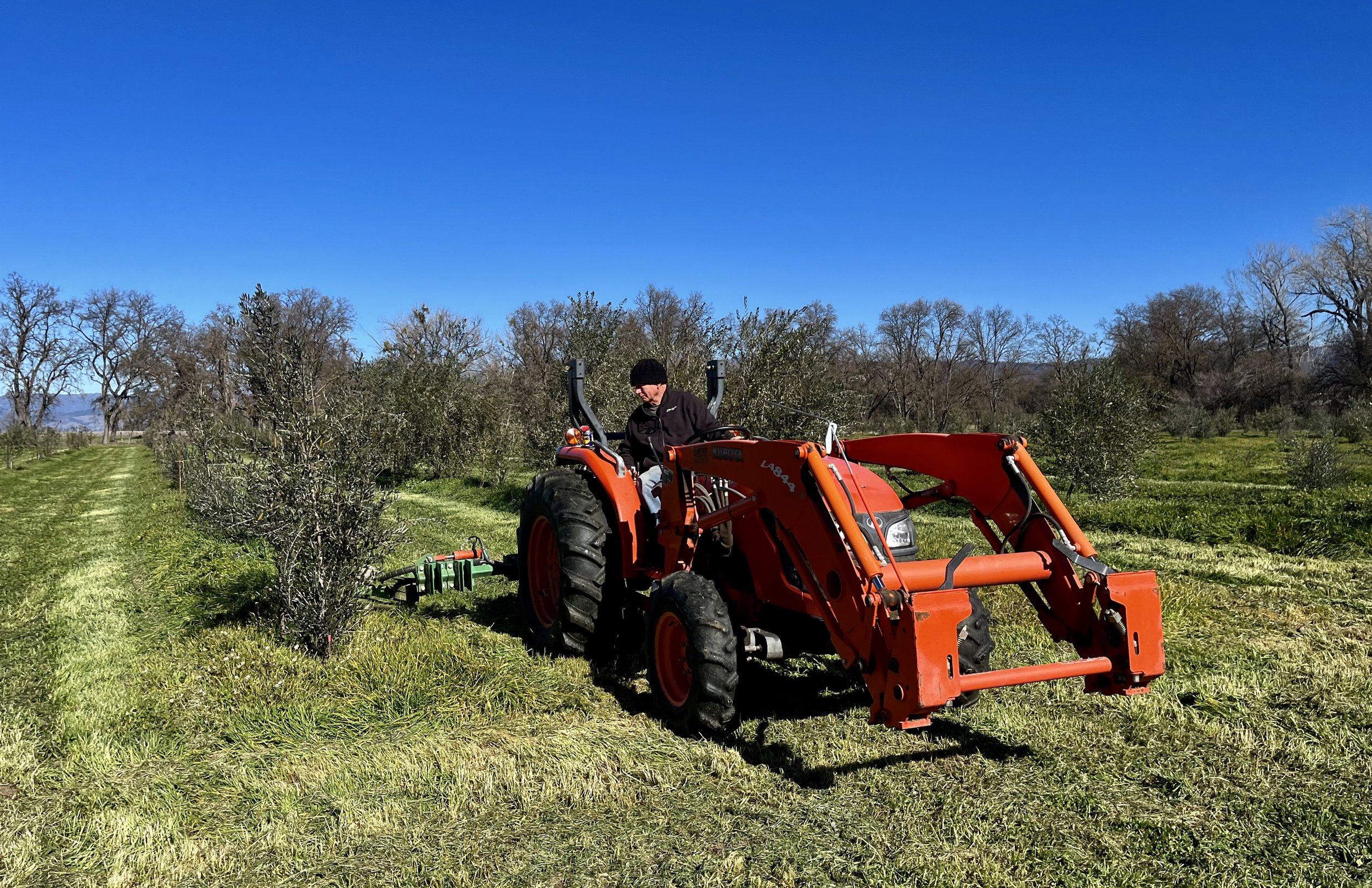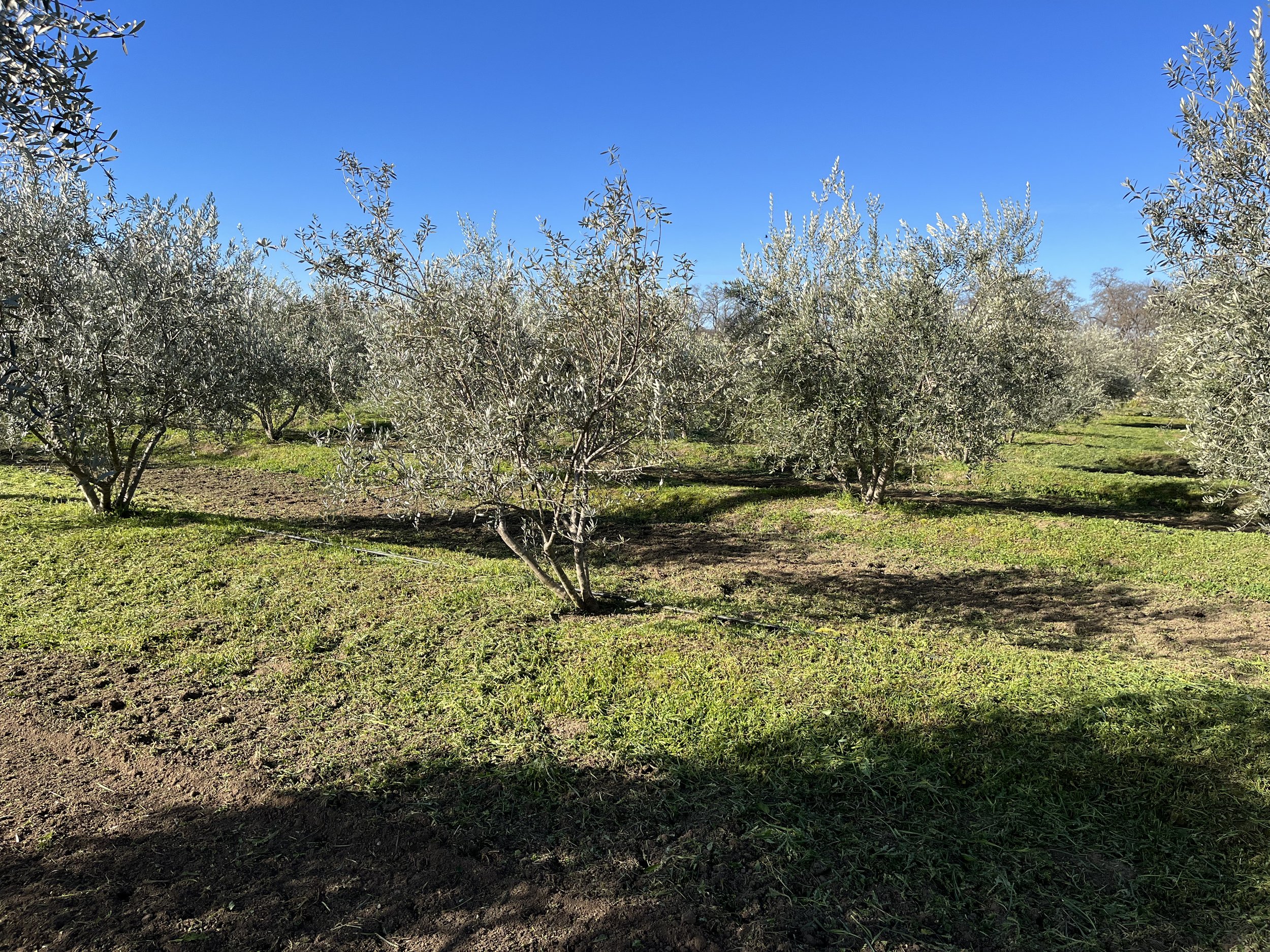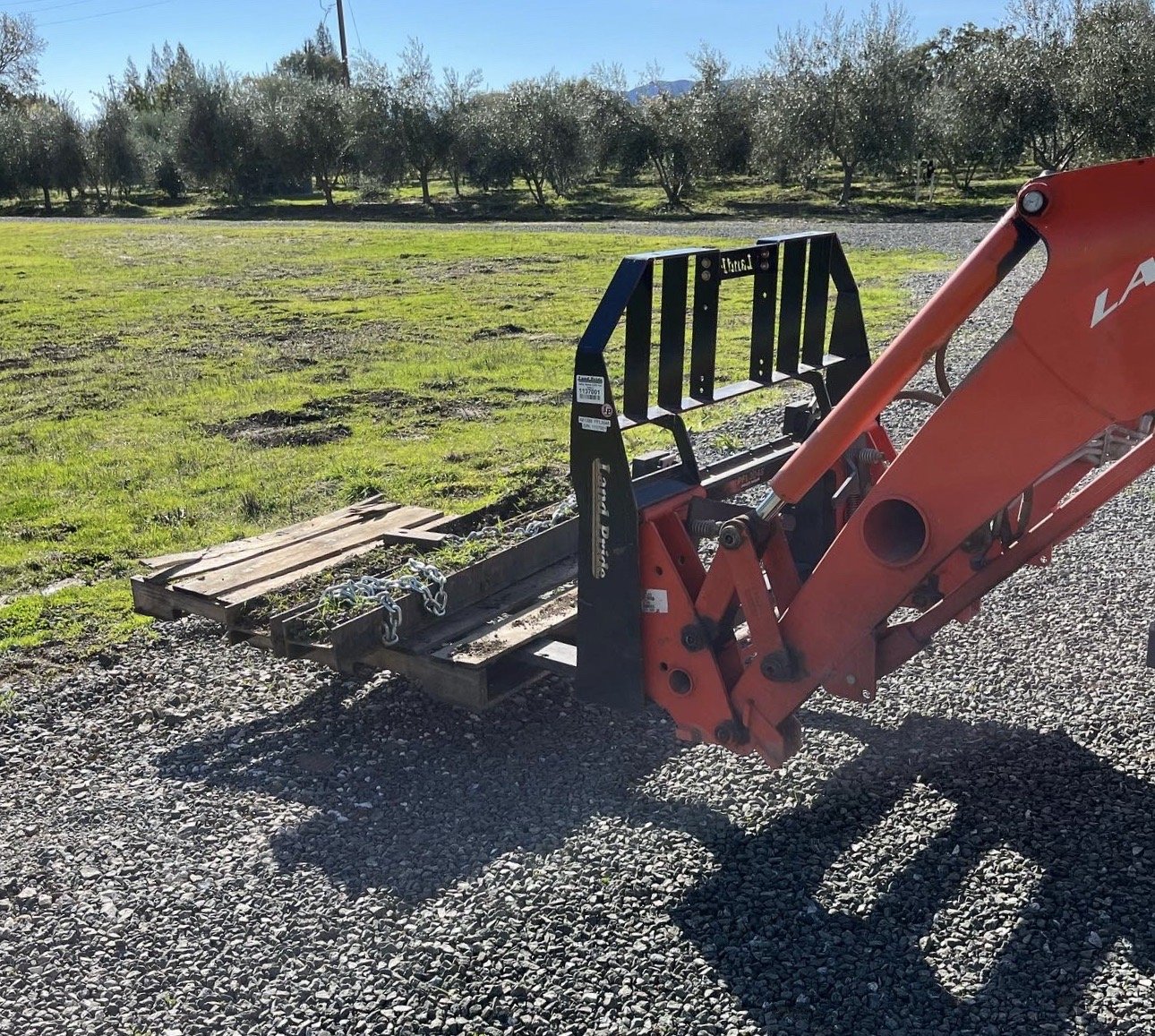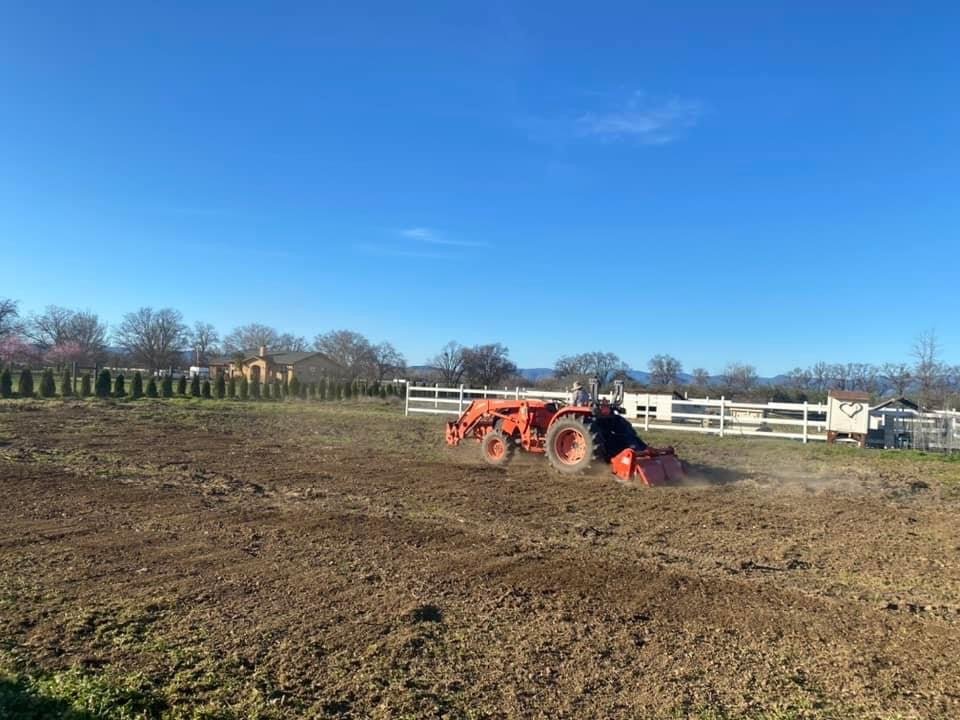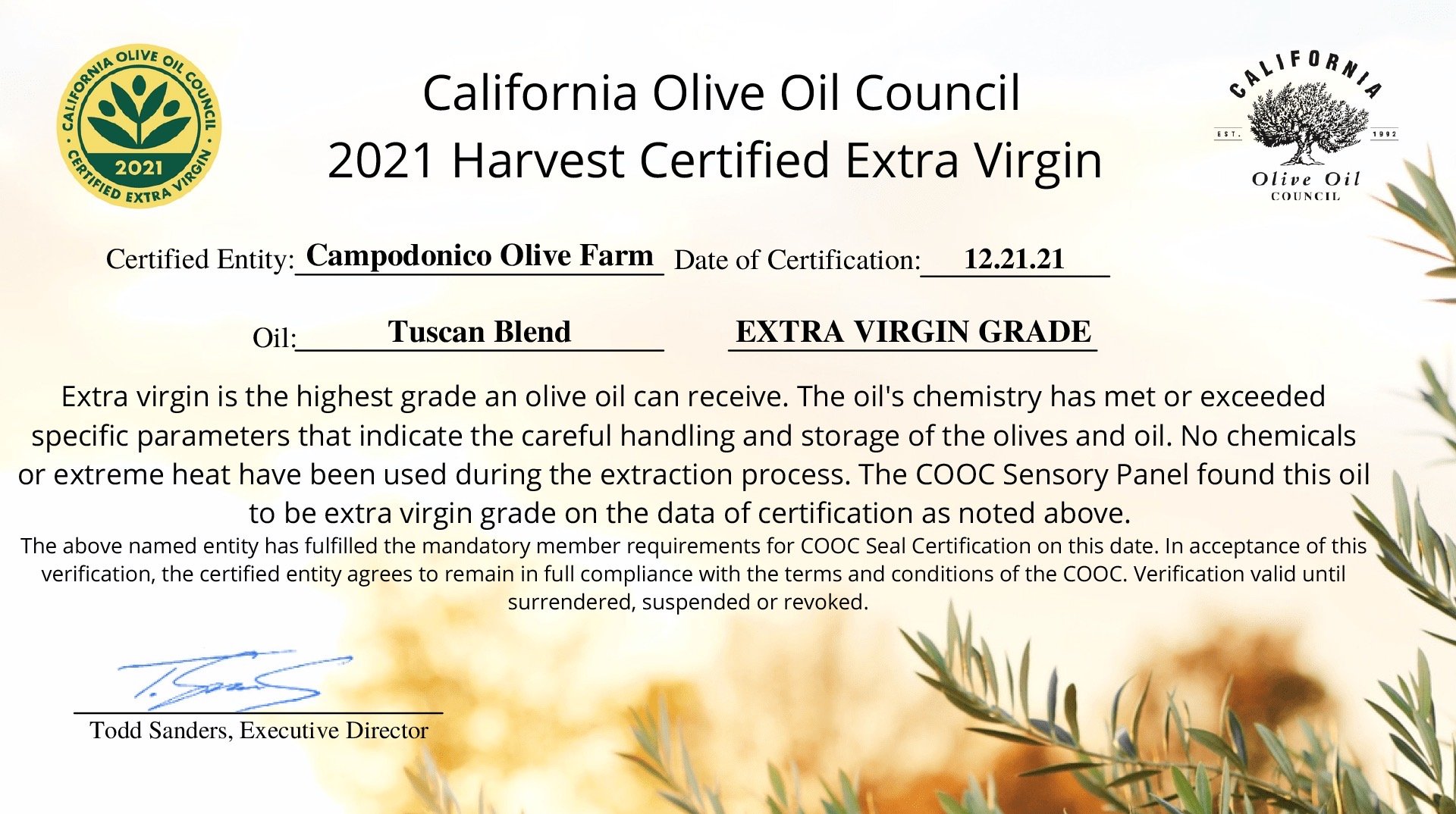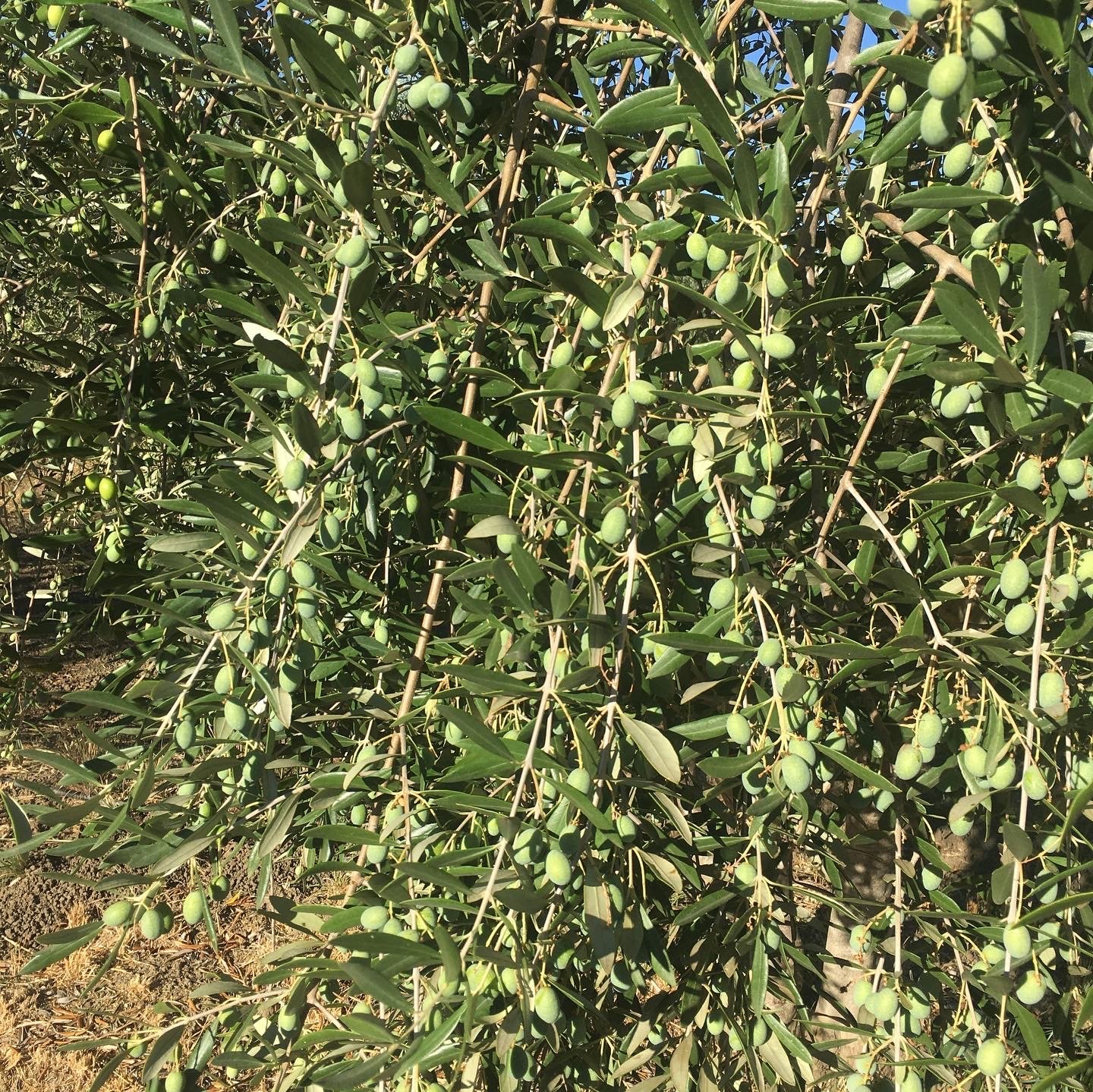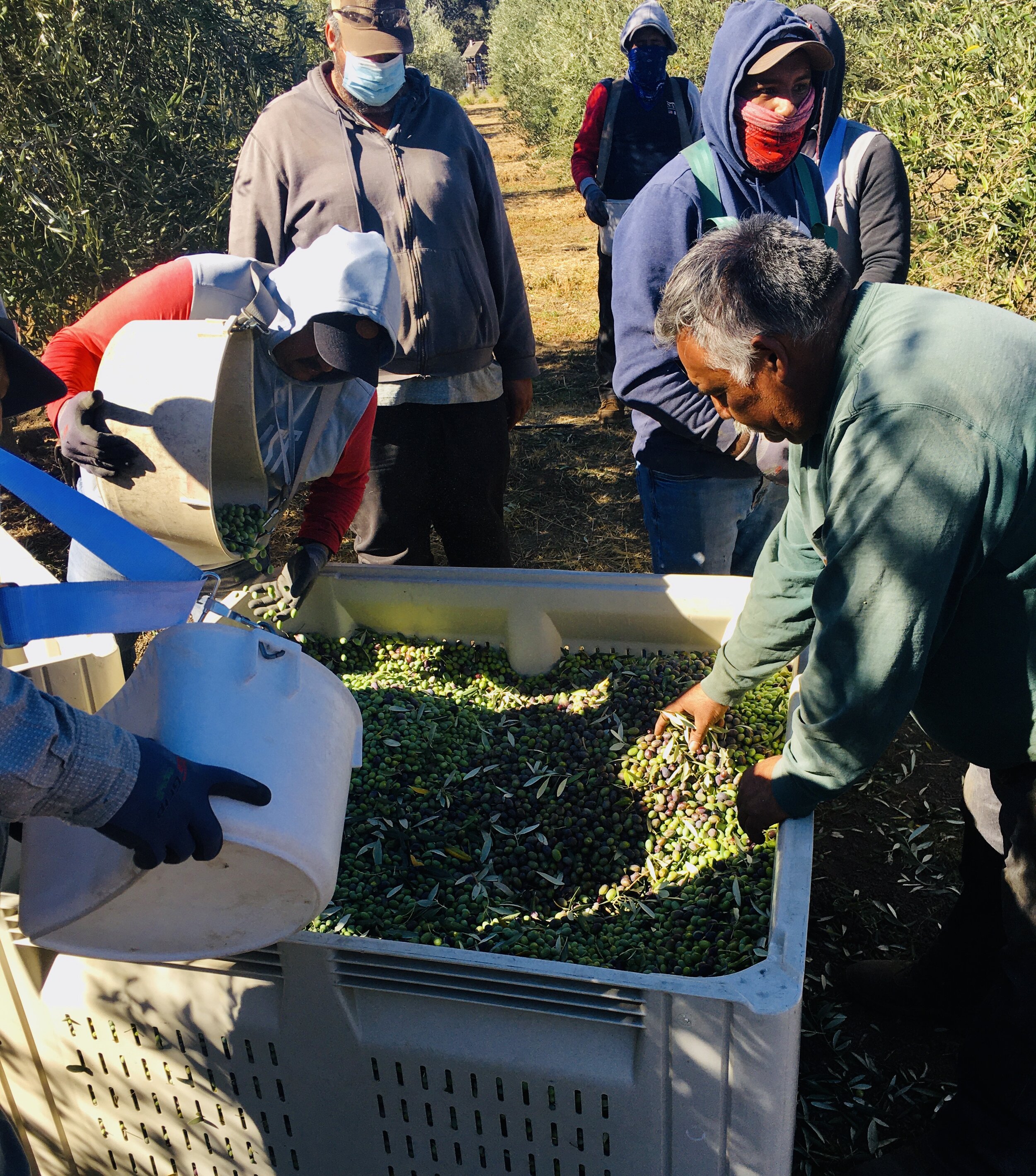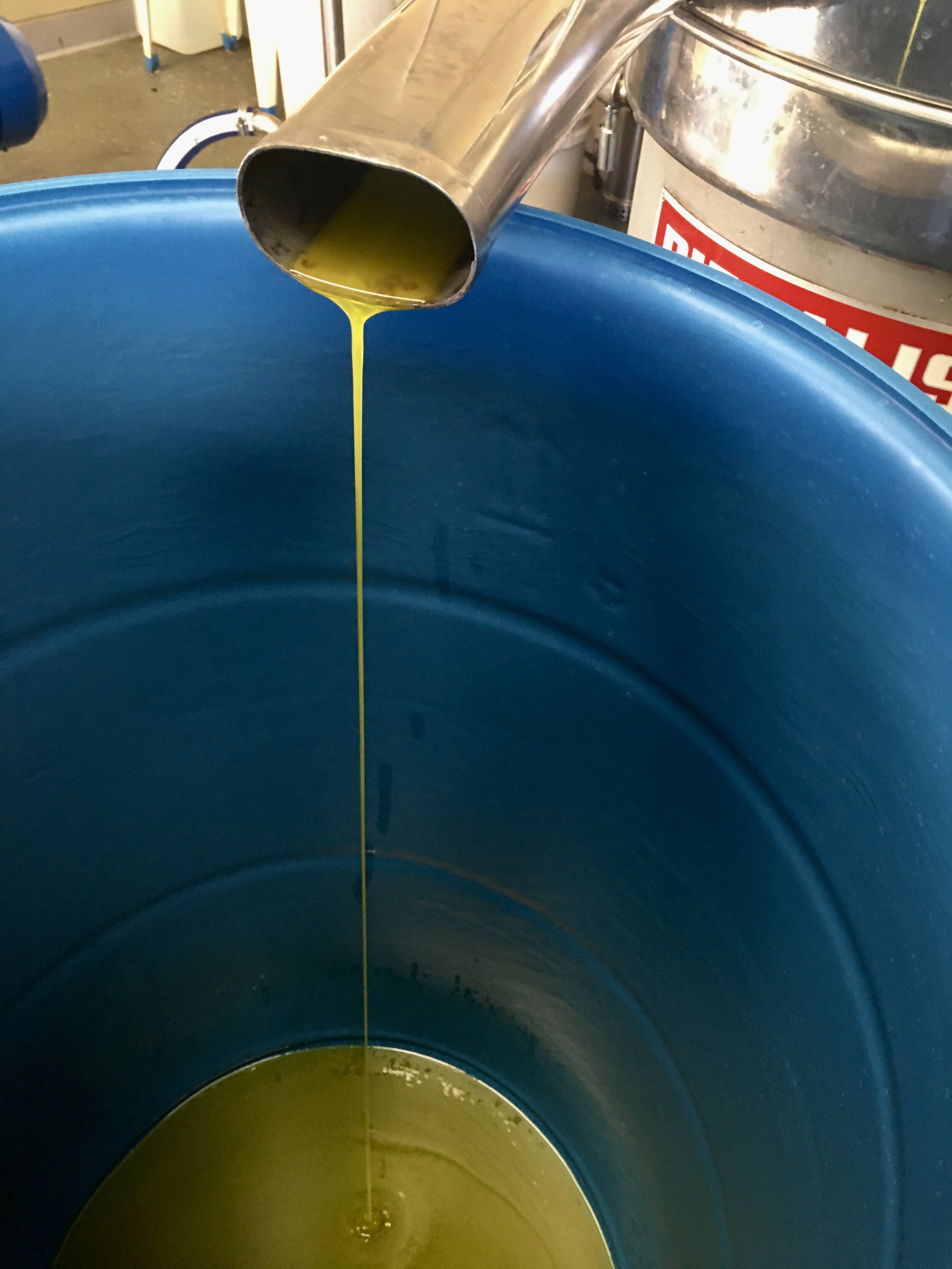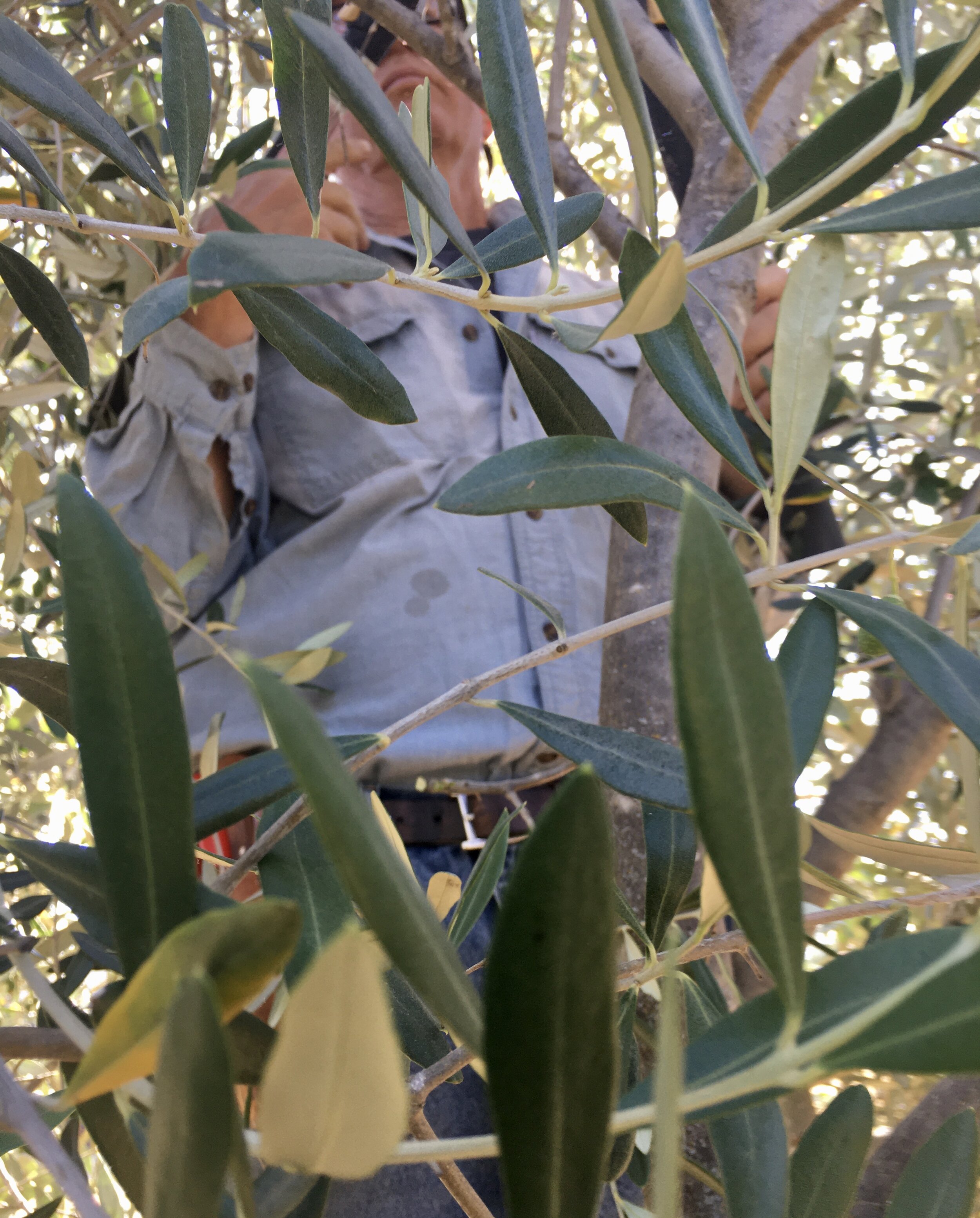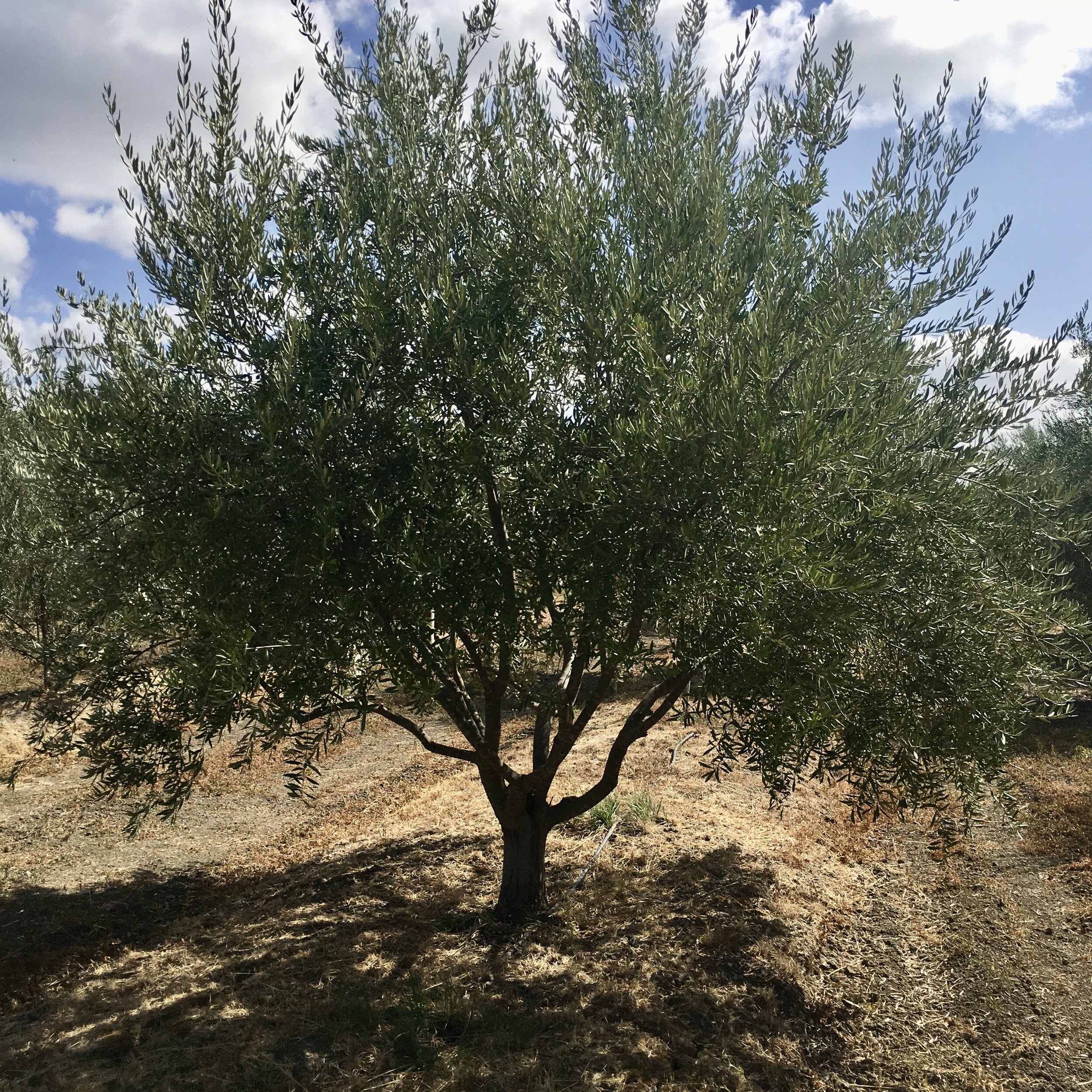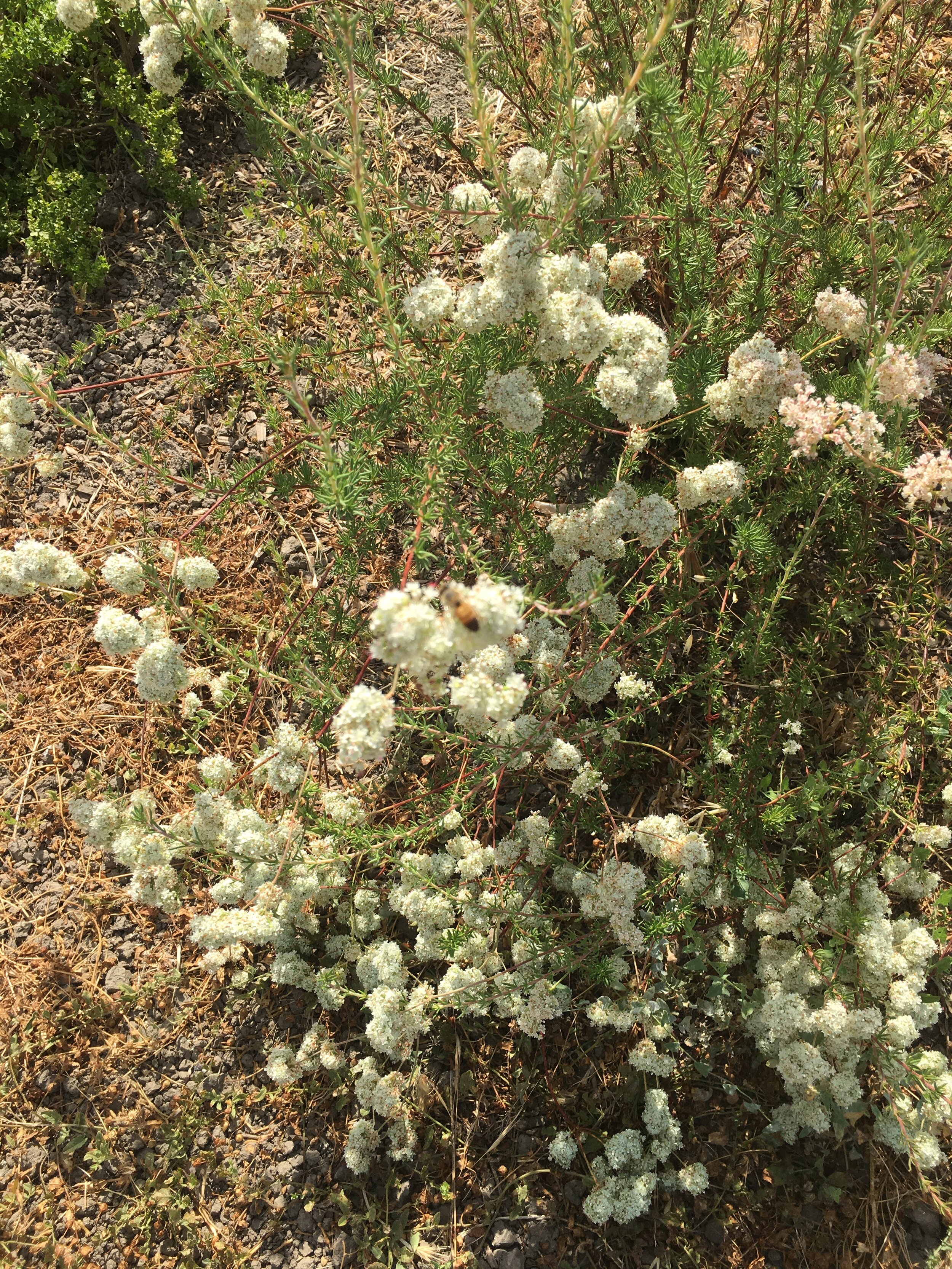The pace at the Farm has picked up. Things started off the first week in May with another successful Big Valley Small Farm Tour. We spent the week before mowing, weeding, sweeping and generally sprucing the place up for our visitors. We had a tasting table ready for the over 200 folks who came to see what was happening behind our arched gates. For this Tour, we had plenty of gold medal winning extra virgin olive oil available to sell. People were curious to see the inside of the barn, the tractor and of course, the trees. We partnered with neighboring farms along Soda Bay Road: Edenberry Farm, The Ripe Choice Farm , Peace and Plenty Farm and Bell Haven Flower Farm.
Moraiolo Blossoms
A month later and we’ve started seeing quite a few blossoms — after wondering for a week or so whether we will have decent efflorescence in the olive orchard. Now of course we wait to see if the winds come at the right time to send sufficient pollen from enough trees, especially from the pollinator trees - the Pendolino and Maurino - to achieve abundant fruit set. Abundant, but not too abundant so we see good oil content in the olives next fall. Farmers are always holding their breath about timing: temperature, blossoms, fruit set, correct watering at the all stages of olive development and most important of all — timing of the harvest. Harvest needs to happen before a hard frost but late enough for the olives to develop a good percentage of oil
Rosa californica, Campodonico Olive Farm






